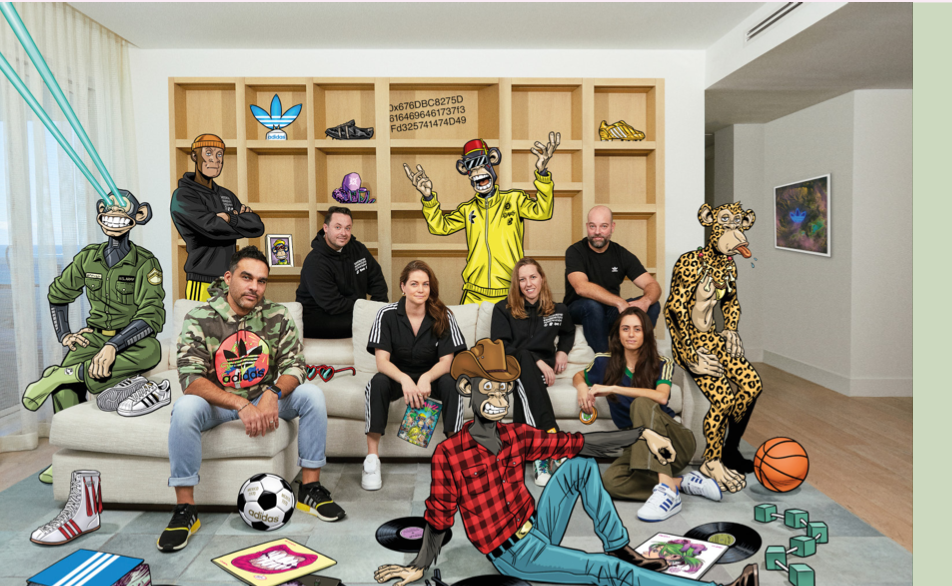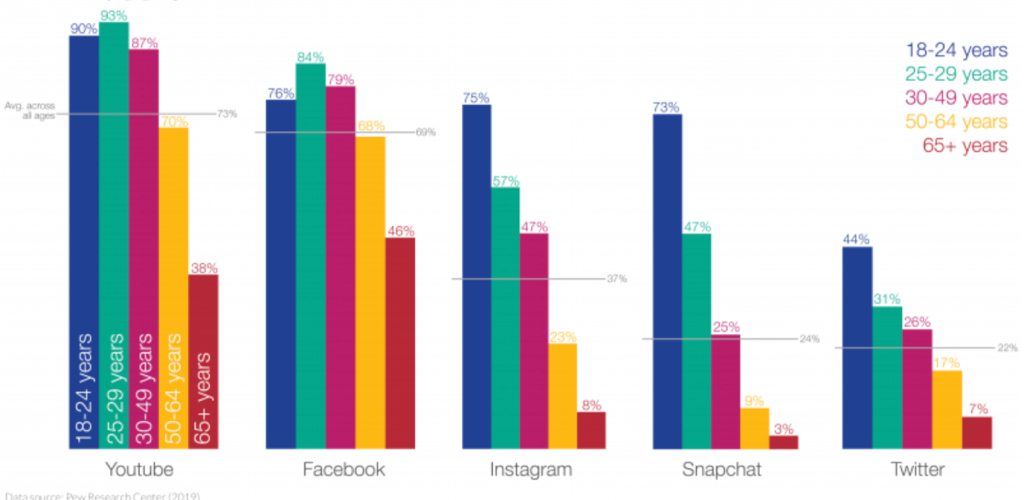- Your cart is empty
- Continue Shopping

Metaverse and Gen AI- A Wide Space to Explore for Fashion Industry
Fashion industry is evolving as much fast as it was never before, the faster it is getting more it is getting difficult for brands to buckle up for to be updated and relevant as much as possible. Gen-Z is Propelling Gender-Fluid Fashion to widen their opportunities in terms of fashion or in terms of their identity specification, today it’s not only about fashion but about expressing through clothes. It’s not the price only today but also the expressive way through clothes. Covid had a huge impact on formal wear brands and outfits also like those typical outfits or suits are now getting replaced by the semi formals or something which is semi casual. Hugo Boss took an initiative and reclaiming the formal wear.
Gen-Z get easily bored and for change sake they want new every single time. E.g. if we talk about earlier times when there were very few influencers and very few platforms to look after whereas in the current scenario, the market has cluttered in every aspect, in terms of influencers, in terms of market places, in terms of online promotions.
Now, new brands are getting into place and introducing new fashion which is also leading to FAST FASHION. Covid has also affected buyers in a positive aspect that the aggressive shopping is also seen in market, market is growing rapidly in parallel with the influencers also are posting on daily basis which leads to frequent purchase. These all things creates FOMO between people of lagging behind or what if we didn’t wear the trendy or current fashion. So, it’s just a matter of time before a current top-line marketplace gets destroyed or loses its all traffic within a night itself.
In general, Engagement of young people are more likely to use social media than old people. But some platforms are much more popular among younger people. This is shown in the chart where we plot the breakdown of social media use by age group in the US.
Since these platforms are relatively new, it’s hard to know how much of this age gradient results from a “cohort effect”. In other words: it’s unclear whether today’s young people will continue using Snapchat as they age. If they do, the age gradient will narrow. So, with this data companies target their audience in the respective manner.

It used to Facebook earlier then Instagram and now Tiktok in some countries and snapchat in India.The new platforms will always come and create their market place with lots of opportunities for the sellers and buyers community. The metaverse is the next game changer not because it is the new emerging technology or marketplace but because it will come with a new total Era and concept that is going to wash off every single other platform within some years. As it only commits user experience not a marketing stunt which will be forgiven a day later.
Physical retail stores are something that is not replaceable at all in any era as it is the original and the only real way of giving user experience. In this, technology and Metaverse will play a very vital role in the coming days.Every brand is now focusing on its physical identity and how can give real-time experience with consumer satisfaction. Now, it’s not only about the impression of the attire but it’s also about the expression of the person which he/ she want to convey through their fashion or apparel.
Influencer marketing and advertising things are changing their means with respect to the shifting of consumer to different platforms and are already on the same path. People are slowly shifting to their itself opinions and a fashion sense which they want to express with their choosing of clothes. Metaverse, if we talk about now is emerging and will cater to almost every type of sense which enhances user experience.
Metaverse and Brands
Shoppers, particularly those in Gen Z, are spending more time online and exploring the possibilities of the metaverse. Interactive, creative digital spaces are a natural evolution of how people use technology, and they reflect the ever-growing amount of time consumers spend online. Gen Z spent an average of 8 hours per day on screens in 2020 and this is increasing rapidly.Big brands like Adidas, Gucci, Prada and so many have already put their legs in and showing their belief in Metaverse with NFTs and providing things to engage them. As the emerging of Metaverse, gen AI is also getting attraction of the audience.
“There are more and more ‘second worlds’ where you can express yourself,” says Gucci chief marketing officer Robert Triefus. “[But] there is probably an underestimation of the value being attached to individuals who want to express themselves in a virtual world with a virtual product, [through] a virtual persona.”
Gaming has become a prime target for fashion brands. Ralph Lauren, for instance, partnered with South Korean social network app Zepeto to create a virtual fashion collection where users could dress their avatars in exclusive products or appearance-altering “skins.”
For some consumers, digital fashion is a natural extension of applying social media filters on platforms such as Instagram and Snapchat, says Simon Windsor, cofounder and joint managing director at Dimension Studio, an agency that worked with Balenciaga on its video game. “We’re just at the tipping point of this new era. It starts to change the meaning of fashion itself.” At a minimum, fashion’s foray into the metaverse suggests promising new routes for consumer engagement. And while no one can predict exactly how this rapidly growing digital universe will shape up, the opportunities it presents are exciting—for luxury brands, retailers, and consumers themselves.
After generative AI’s breakout year in 2023, use cases are emerging across creative industries, including fashion. Capturing the value of this transformative technology in 2024 will require fashion players to look beyond automation and explore its potential to augment the work of human creatives. Gen AI — algorithms pre-trained on large volumes of data such as text, images and code, often fine-tuned with other corporate data, that can create new, complex content — had a breakout year in 2023 as powerful new tools hit the market. By January, two months after its launch, Chat GPT reached an estimated 100 million users, a record pace of growth at the time. Artificial intelligence and augmented reality could open up opportunities for new business models that leverage virtual fashion.
Metaverse – A new market place
Virtual commerce is already a thing, and the Metaverse has the potential to take it to the next level. Brands can create virtual stores that users can visit and make purchases. The experience will be much more immersive than traditional e-commerce, and it could become the primary way of shopping in the future.In the Metaverse, virtual commerce can be more engaging and personalised than traditional e-commerce. Users can have hands-on experience with products and services, which can increase the likelihood of making a purchase. Brands can also use virtual commerce to create interactive and immersive experiences that showcase their products and services. For example, a fashion brand could create a virtual showroom that allows users to interact with the apparel in a more engaging way.
Morgan Stanley, an American multinational investment bank and financial services company, predicts that metaverse could present more than $50 billion opportunity for the luxury fashion industry over the next decade that would include $22.6 billion market for luxury NFTs too. This seems quite realizable seeing the increased merging of physical and digital worlds during the recent times. This will only gather pace in the coming years and fashion’s entrenchment in the metaverse will be one of its definite outcomes. Therefore, driven by ‘future-need’, many fashion brands have started their journey to be a part of metaverse . While the technology’s use is nascent in many industries, it’s accelerating. If its trajectory continues, it could be one of the most transformative technologies for the fashion industry in a long while. Early experiments have offered a promising start, but without any further results we can’t predict somethings. Data shared by BoF-McKinsey State of Fashion 2024 Executive Survey:

*Retail Value RSP USD million
| 2019 | 2020 | 2021 | 2022 forecast | 2023 forecast |
| 1,773,406.9 | 1,453,277.5 | 1,716,952.2 | 1,846,222.0 | 1,959,592.1 |
Worldwide Apparel & Footwear Market Size
*Year on year growth (%)
| 2019-2020 | 2020-2021 | 2021-2022 forecast | 2022-2023 forecast |
| -18.1% | 18.1% | 7.5% | 6.1% |
The pattern of purchasing and year on year growth rate clearly states that the fashion industry will have huge potential in upcoming years and will generate tons of opportunities in shaping the world wide economy in every possible way. It may be directional but will have vast area in creating job roles and defining fashion in a sense with mega projects.
Author
~Chetanya Changia
Having a keen interest in the fashion and apparel industry, Graduated in textiles.
He has a futuristic approach and believes in creating something sustainable. He has experience in retail and sales with good knowledge of maintaining public relations. He has done projects in technical textiles and is further working to build a healthy environment
